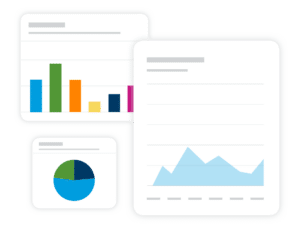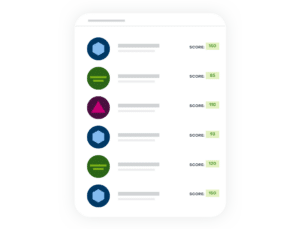How BDRs and Marketing Work Together to Create Nurture Campaigns
Despite more than 20 years of CRM evolution, the ability to generate qualified leads remains an elusive task for many organizations. One of the main reasons is that marketing teams still struggle to define what good leads are and pass them successfully on to sales. The numbers speak for themselves: 54% of sales leads generated by marketing are deemed to be either poorly qualified or underqualified.
Your Business Development Representative (BDR) position is one of your best weapons. It helps you define what good leads look like, personalize your outreach and improve lead qualification, deal tracking, and opportunity management.
BDRs are at the edge of the marketing team and the front line of the sales team, orchestrating their activities and bridging the gap between them, so potential revenue doesn’t get lost due to their misalignment. A BDR’s role should never be underestimated as they help grow your sales pipeline and improve your marketing efforts.
Why Do You Need a BDR?
Why can’t marketing or sales do the job, you might ask? It’s because of their more specialized roles: sales focus on closing deals with high quality leads, while marketing is expected to generate those leads. They both must have mutual goals and metrics for an excellent organizational alignment but asking them to take the role of a BDR will imply a permanent switch between marketing and sales skills, leaving them less time to concentrate on their primary tasks.
BDR acts between them, turning marketing qualified leads (MQLs) into sales qualified leads (SQLs) by assessing and nurturing them to match your company’s ideal customer profile, ensuring a seamless handoff process and improved productivity.
What Role BDR Plays in Lead Generation and Lead Nurturing
Marketing team efforts firstly center on generating leads and influencing their perception of your brand. They get lead contact information when a prospect interacts with your data points, such as:
- Social media
- Online content (e.g., blogs, whitepapers, guides, analyst reports)
- Webinars
- Feedback surveys
- Reviews
- Onsite events
Marketing teams may gate content with forms to gather information about contacts, then place them further into a lead qualification process. The type of form often is scored differently depending on the content and the length of the form. Determined by which content is most appealing to your leads and their level of engagement, you may start nurturing and prioritizing.
AI-driven tools, such as Sugar’s AI engine SugarPredict, use automated machine learning to incorporate predictive lead scoring into your leads and contact records. AI compares your lead engagement activities to your previously converted lead data to predict the likelihood of your leads converting to MQL. The evaluated data included webheads, submissions, email opens and clicks, and event attendants.
What makes BDRs the frontline for your lead nurturing campaigns, granting a more efficient workflow between sales and marketing?
-
The BDR is the first to notice when something isn’t working in the lead scoring system.
Based on their conversations with prospects, BDRs can provide a unique insight and notify marketing if these leads are over or under-qualified so that they can adapt the lead scoring process for future use. Launching nurtures makes revisiting and reevaluating your scoring models critical because it will enable you to ensure the quality of your leads. Remember that a premature sales pitch will only alienate a prospect, risking the final conversion.
-
The BDR can learn what has the greatest impact on a prospect.
Based on their marketing automation reports, marketers may see what content the prospect consumes most. But a BDR can learn where it was consumed and any other avenues that influenced their decision to pursue your company. A person may receive ten emails in a nurture campaign, but maybe the content provided in the third or ninth email enticed them to engage. This kind of information allows marketers to focus on what works and leave behind what doesn’t base on data from a BDR conversation.
-
The BDR provides insight into the important review sites for the company affecting buying decisions.
BDRs build trust with valuable leads through all key social media platforms presenting your brand as an industry authority. The reviews and testimonials (e.g., customer case studies) should be at the forefront of the marketing efforts because successful stories encourage prospects to trust your brand, buy from you and become loyal.
-
The BDRs are the champions of cold calling and cold emailing.
A BDR not only nurtures and supports inbound leads but will also develop an outbound strategy using cold calling and cold emailing—which are not that cold anymore, but more like a holistic approach to fostering trust. They search for untapped channels where potential leads can surface, even if they haven’t shown interest in your service or product. They could be a match for your ideal customer profile (ICP). AI-infused tools enable you to gather info about your prospects to understand their pain points. Your BDR has the data and research to make substantial, personal connections and conduct intelligent conversations with your potential clients.
Closing Thoughts
By engaging and prospecting, BDRs assist in overcoming the obstacles they encounter when nurturing prospects:
- Inactivity—when the leads think they must put too much effort into getting your solution
- Doubt—when the prospects are afraid your solution is not going to work for them
- Costs—when the leads think your solution is too expensive.
As your company grows, so should your lead generation and nurturing efforts, resulting in more interactions, engagement, and hopefully more conversions. Your business development representative’s role is to provide insights into where the prospects are in the buyer’s journey, help you tailor their experience, and shorten the purchase cycle.



